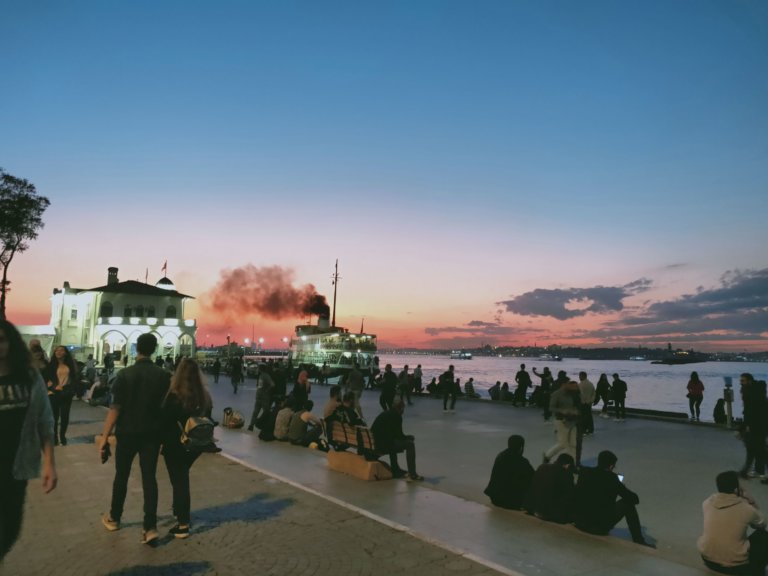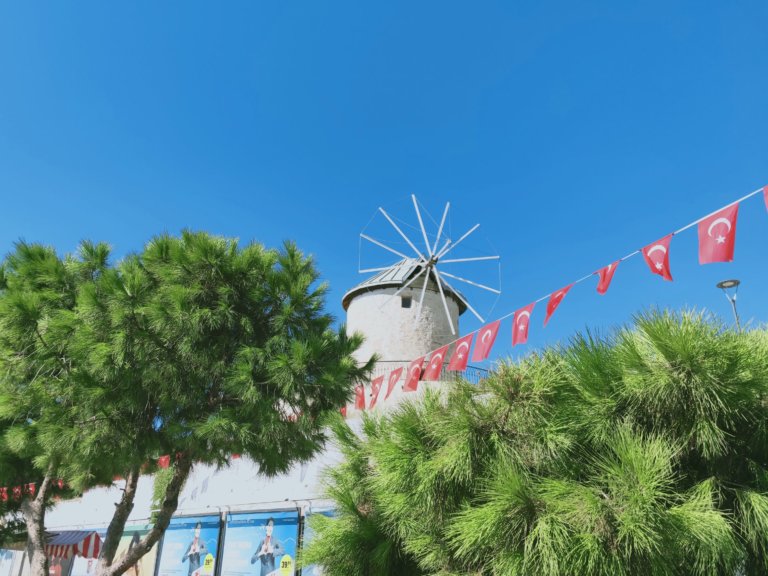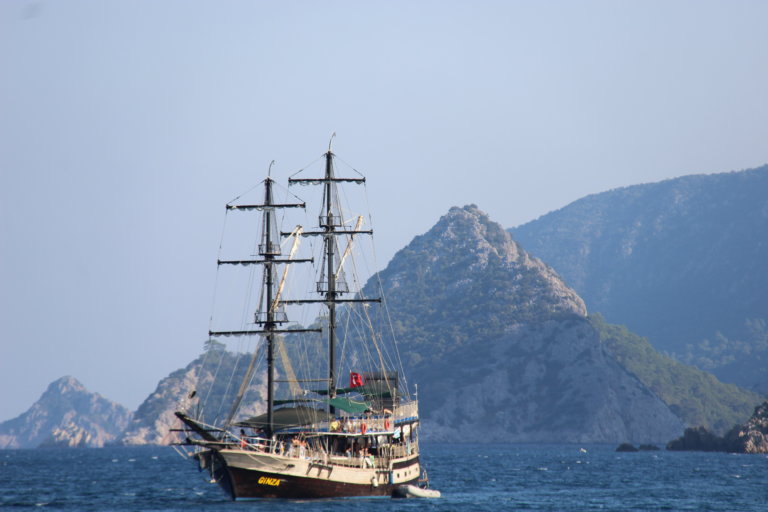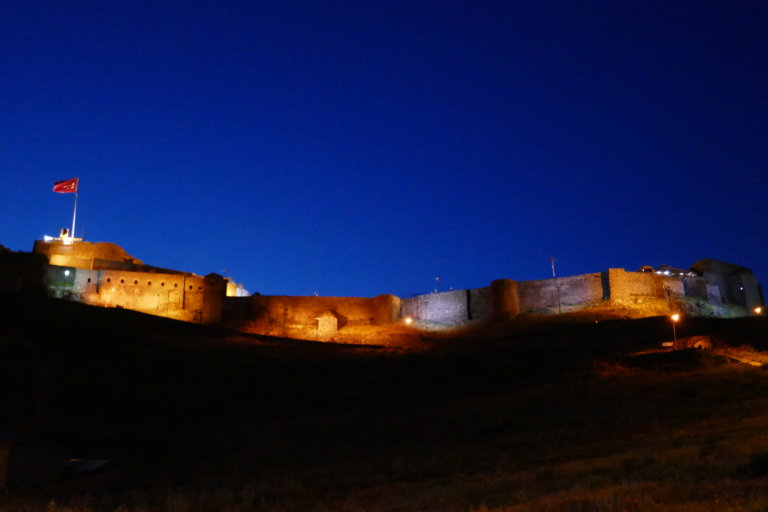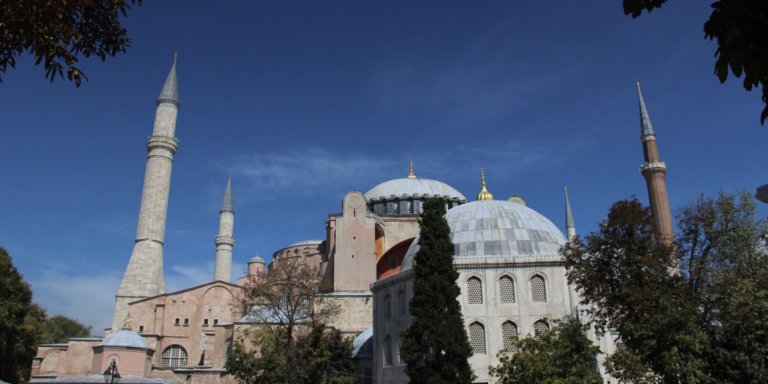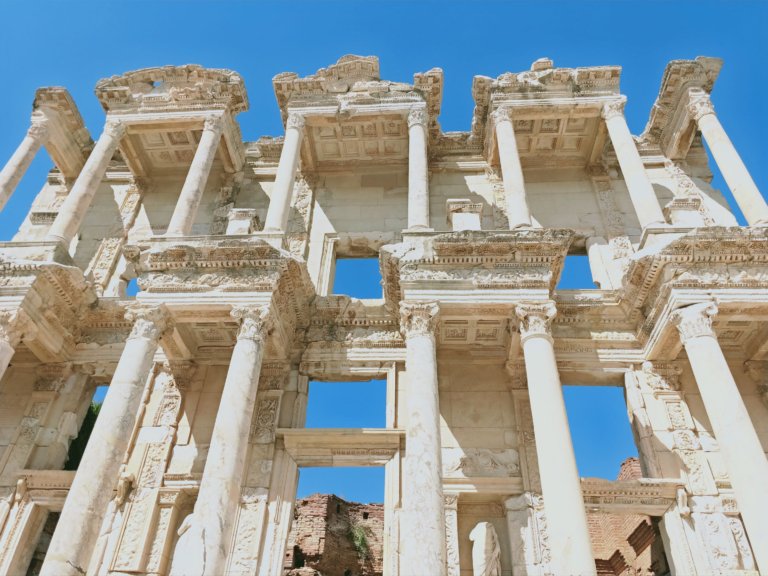Pamukkale, Turkey From Cleo’s Pool to the Necropolis
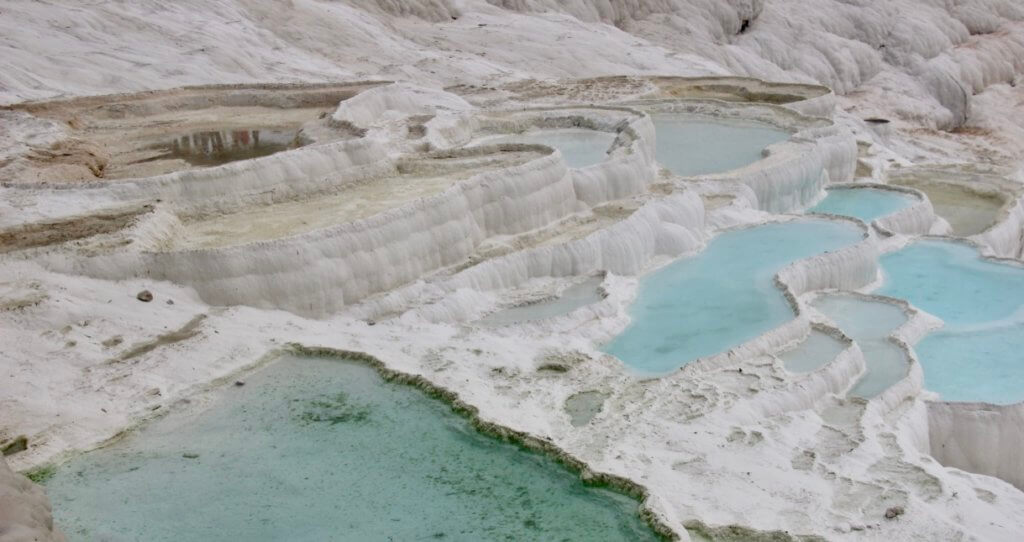
Day 137 13 September Aykaka to Pamukkale
We got up and headed out for a bus pickup to go to Pamukkale which we had been recommended to go by our Turkish friends. We didn’t know much about it except it had some ‘white mountains” and the relics of an ancient city.
Three hours later after a Turkish breakfast with 100 of our closest tourist friends, we arrived at the Pammukale complex outside the city of Denizli.
A major attraction of the site was Cleopatra’s pool, a thermal hot pool that most of the other people on the bus headed off to. Legend has it that Marc Antony built the pool as a gift to Cleopatra. That same legend asserts that she swam in the very same pool. It was later destroyed by an earthquake and while a Roman temple to Apollo surrounded the pool. The pool now contains the remains of the temple, Doric columns visible on the floor of the pool.
It is the attraction of the thermal waters of Pamukkale ( Cotton Palace) that drew people to it, with first the Greeks and then the Romans creating the city of Hierapolis. The name ‘Cotton Palace” is a more recent name given to describe the amazing white calcite pools that cascade down the hillside.
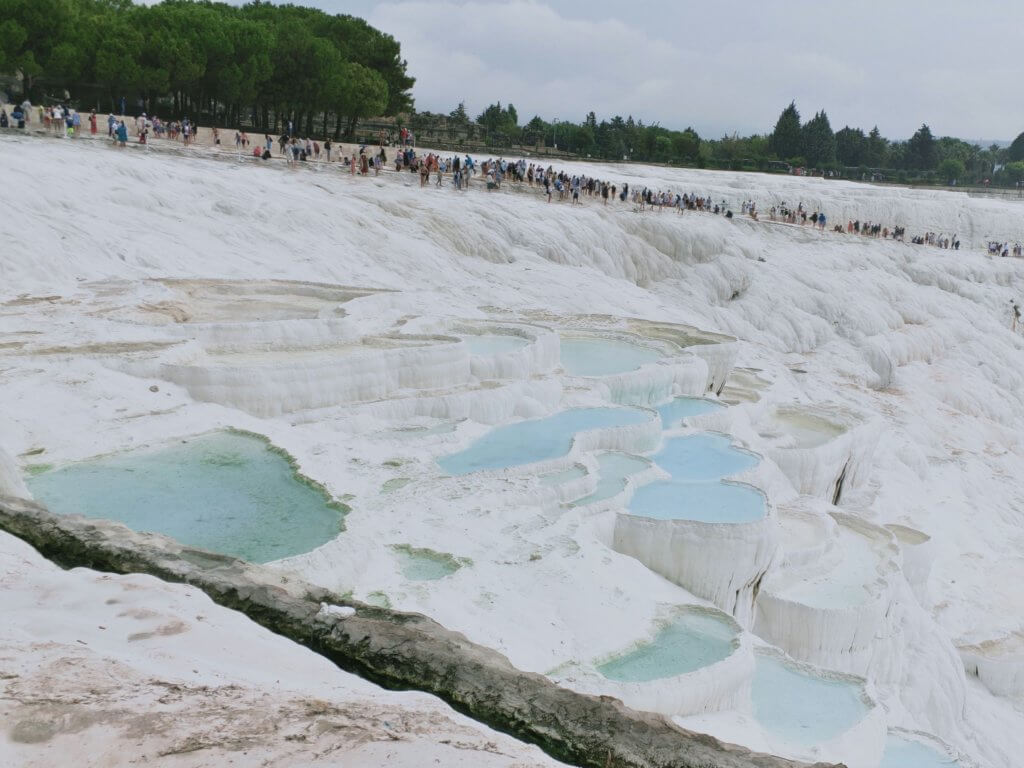
These are attraction enough however their presence created a demand for the ancient Greeks and Romans to claim healing powers for the waters. For some two thousand years, people have come here for healing. Unfortunately the recuperative powers of the waters did not always work and as a result, some people ended their lives here. This has meant that the ancient ruins of Hierapolis includes a Necropolis that stretches for two fascinating kilometres.
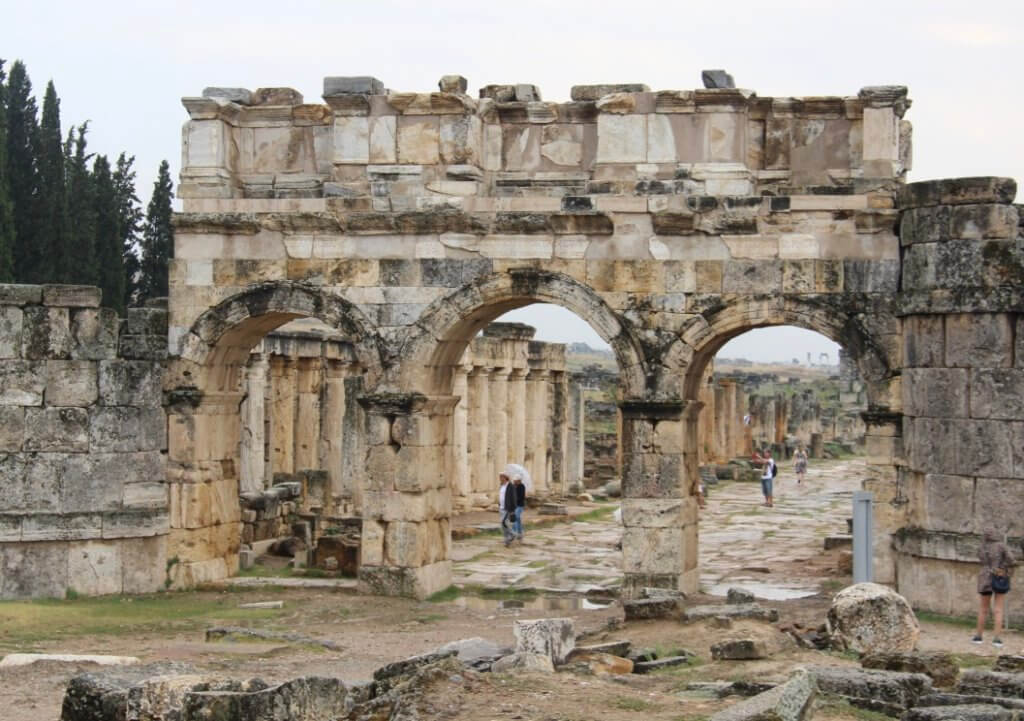
It is truly an amazing sight of different approaches to tomb building and ancient sarcophagi stretching across the landscape. With a range of burial types and sites both below and above ground.
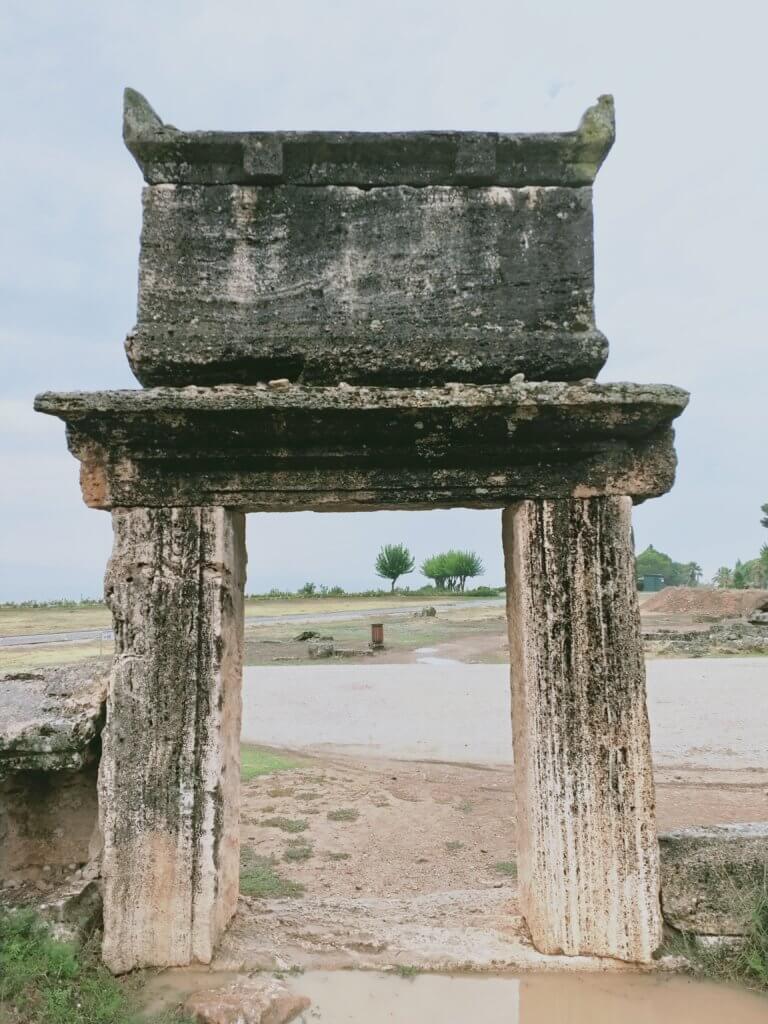
An interesting fact is that the word sarcophagus means flesh-eater which was the name given to these constructions because over time the body was reduced to bones, and this process was thought to have been hastened by the containers themselves with early beliefs that the tomb itself consumed the bodies.
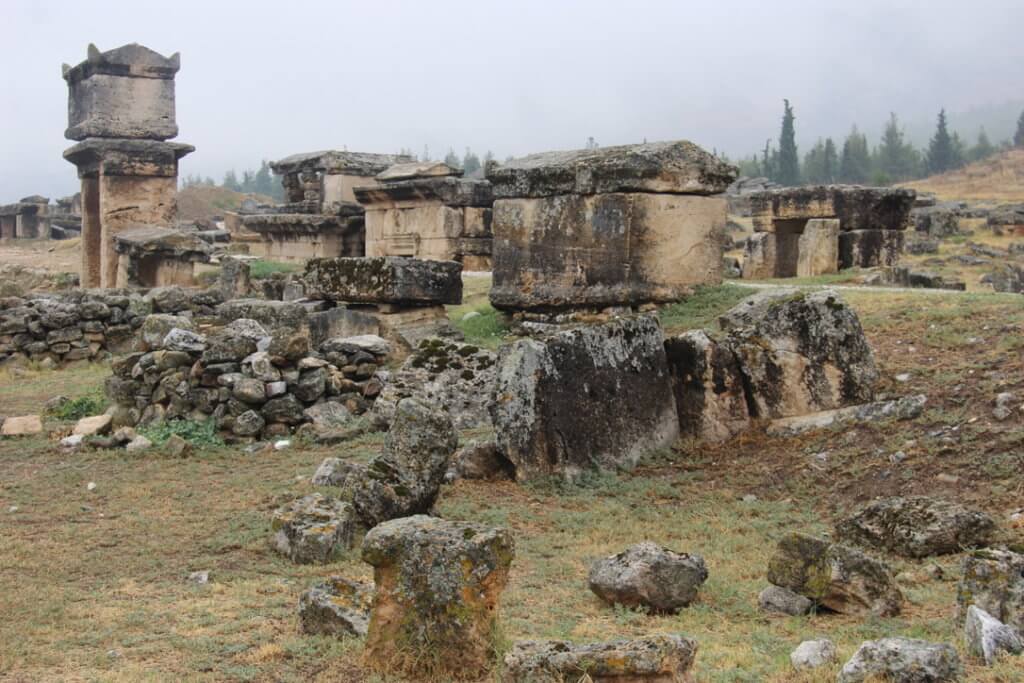
The whole area has building remains, columns and pillars which mark the outline of the city. For us apart from the Necropilis the amphitheatre set on the hill behind the town was a highlight. A wonderful structure with a well-preserved stage area.
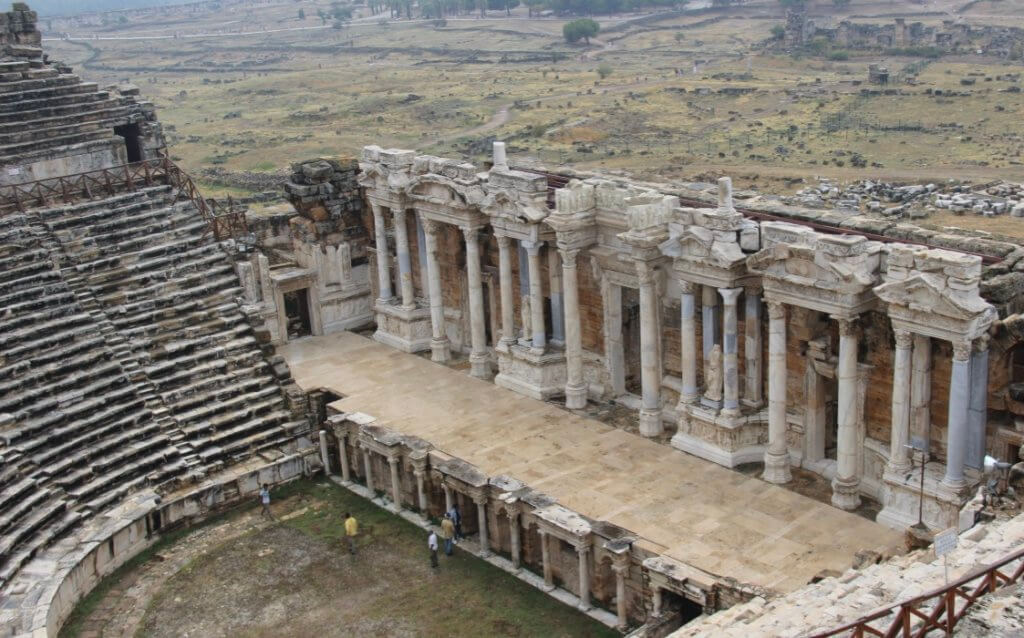
The amphitheatre of Hierapolis
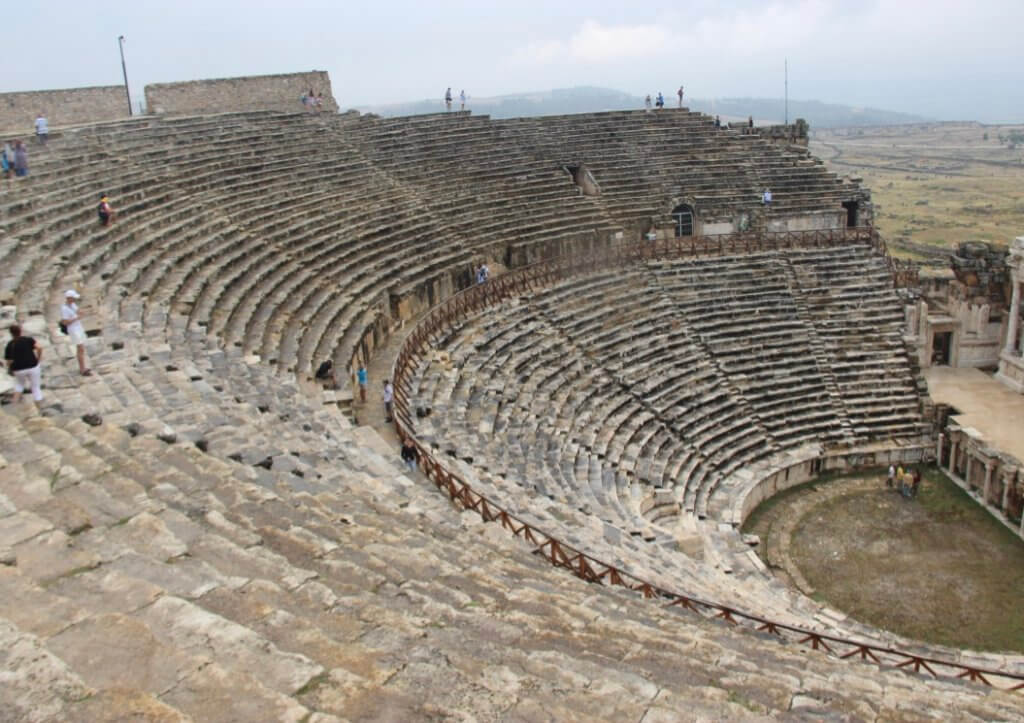
In addition to buildings, there was evidence of the highly developed infrastructure the early Roman civilisation devised. Including waterways taking water through the town.
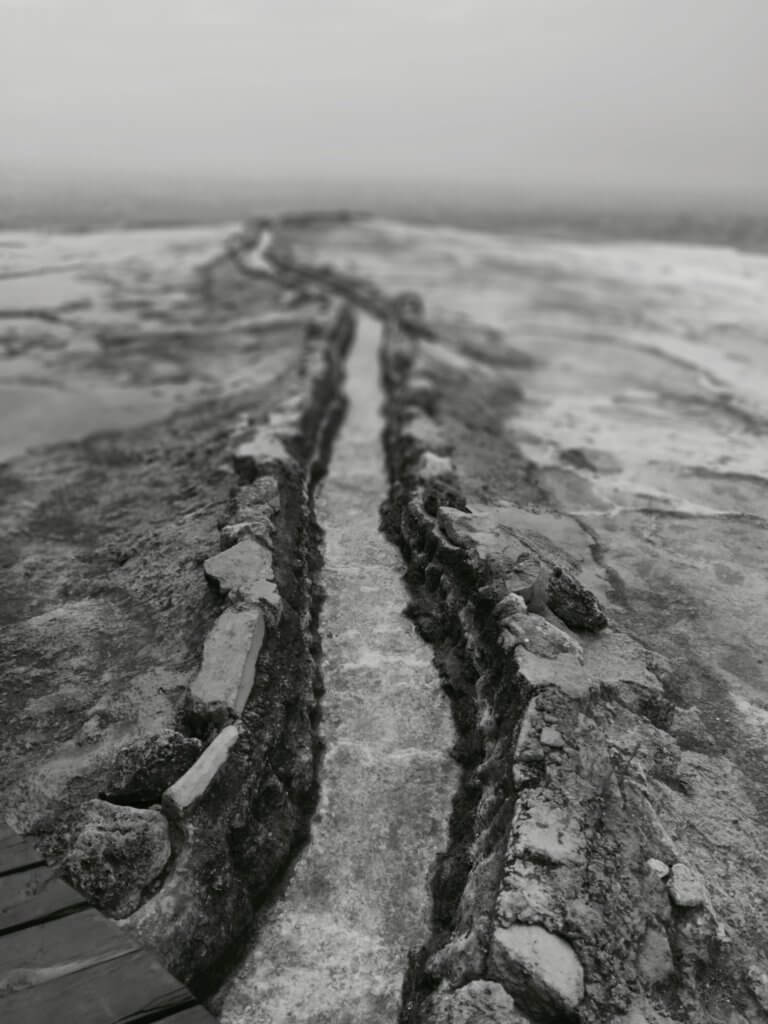
We left reluctantly to head to our next destination and the city of Selcuk. However, the combination of the ruins and the ‘Cotton Palace” mountains was a real highlight for us and is on our “to return” list.
Like most of these sites, there are conflicting stories about origins and historical events. As a UNESCO site history is preserved and probably the best reference is their description of the site.
Travel Information
Buses go to Denizli and then Pammukalle from all over Turkey.
It is recommended generally to stay over night in Pammukalle itself so that you can time your visit to miss some of the crowds. It is iTurkey’s most popular tourism destination.
